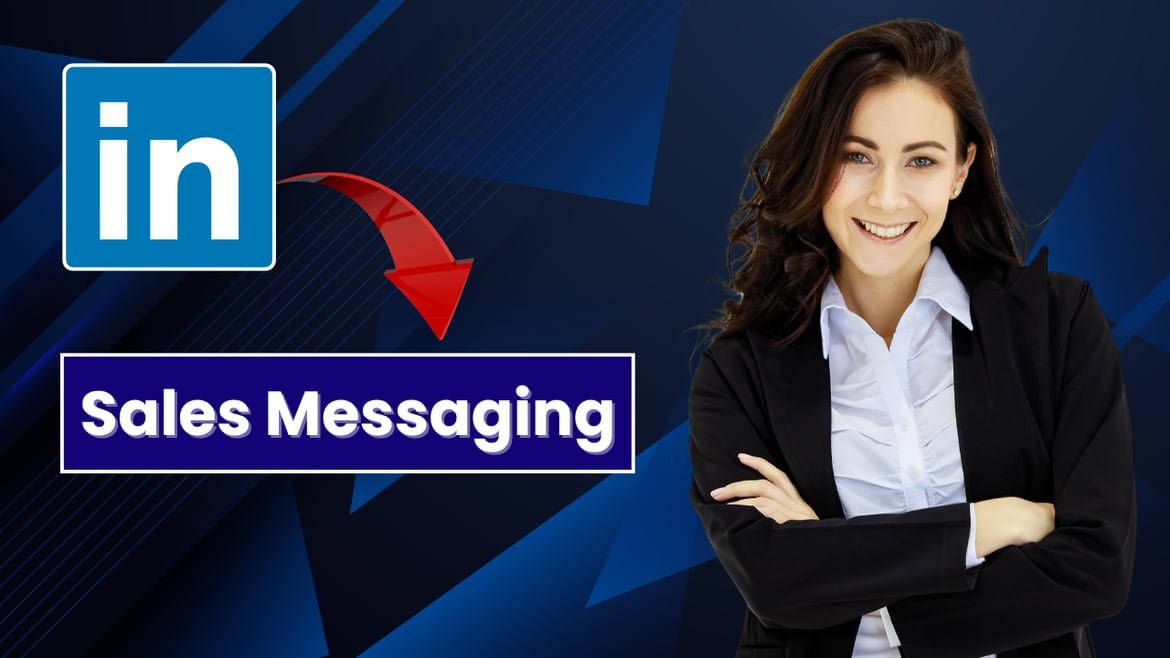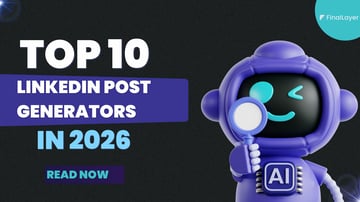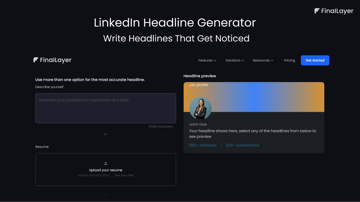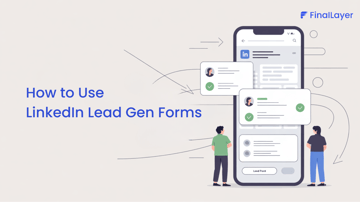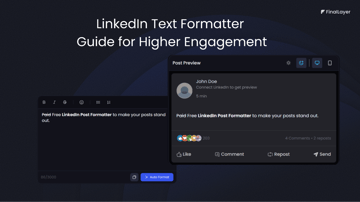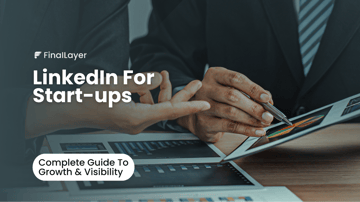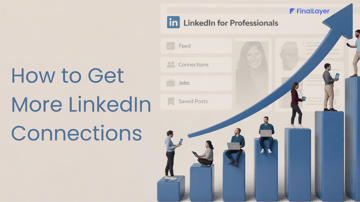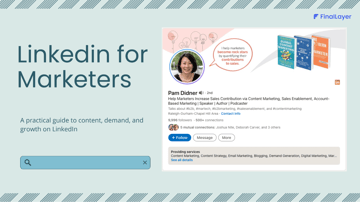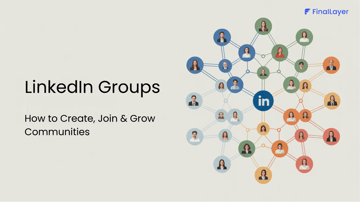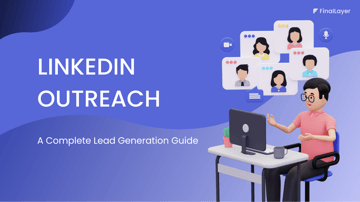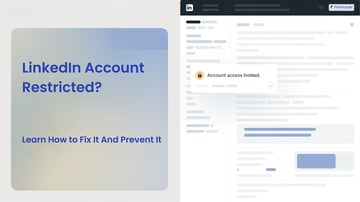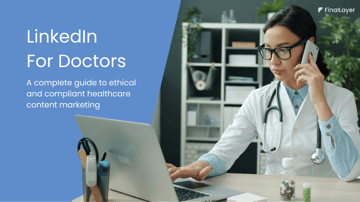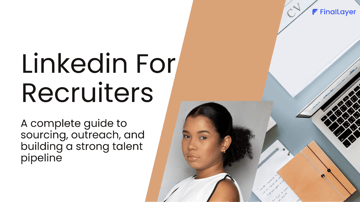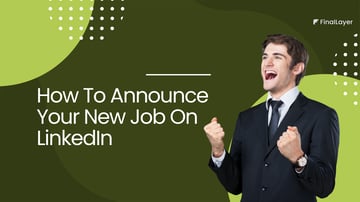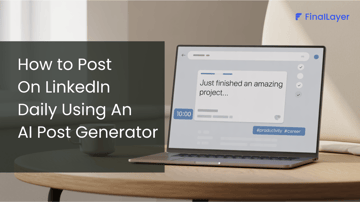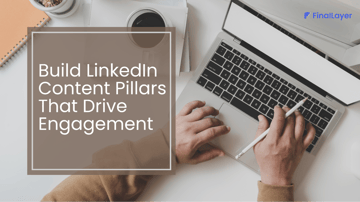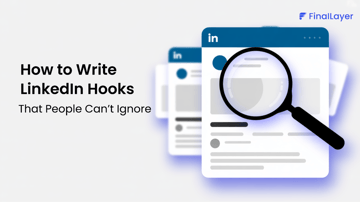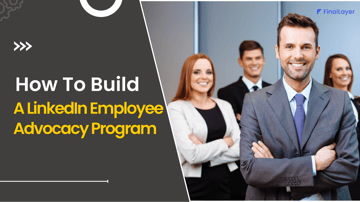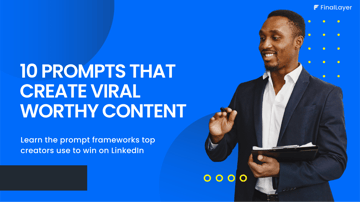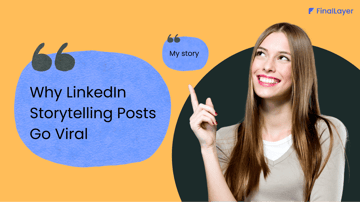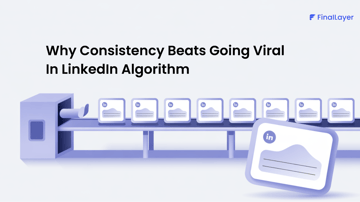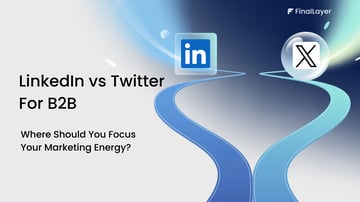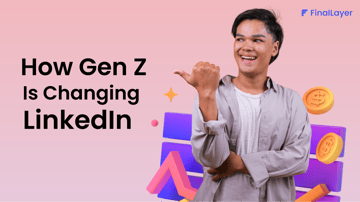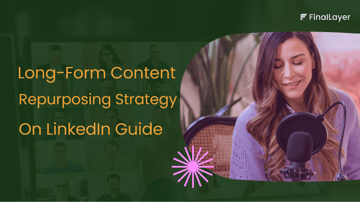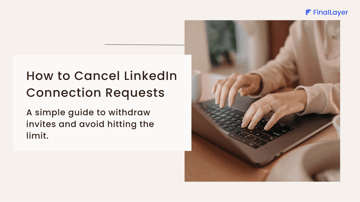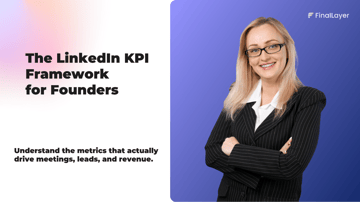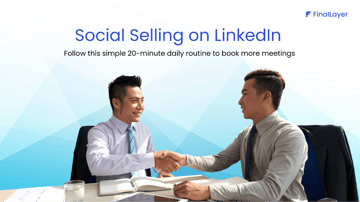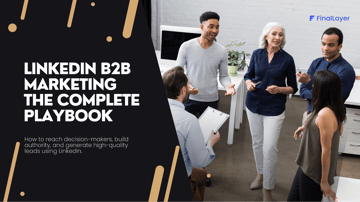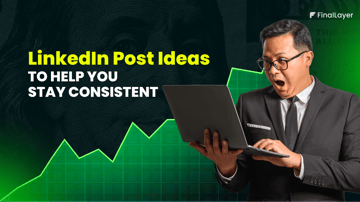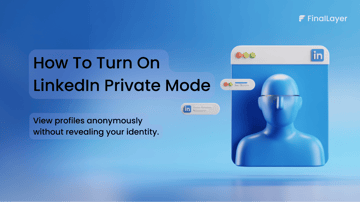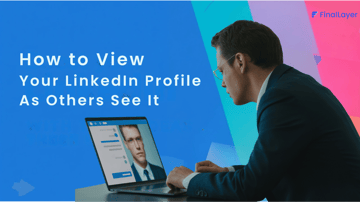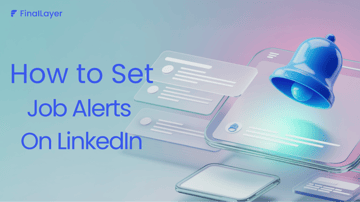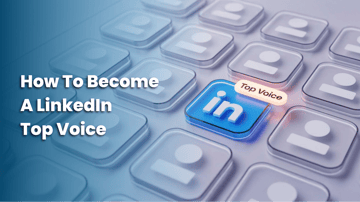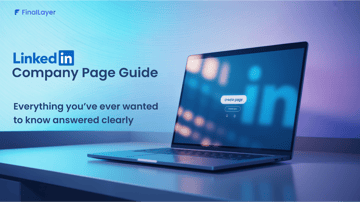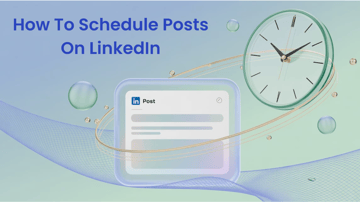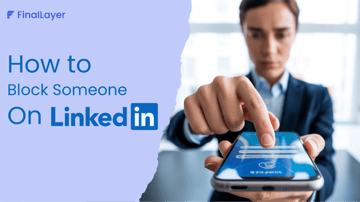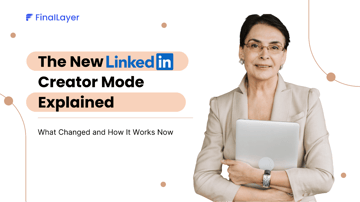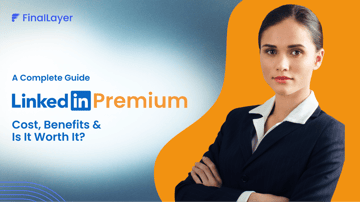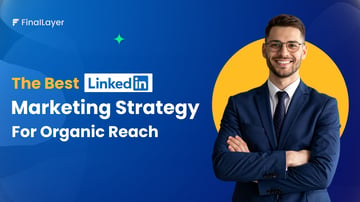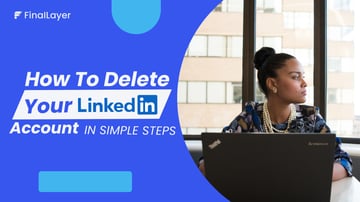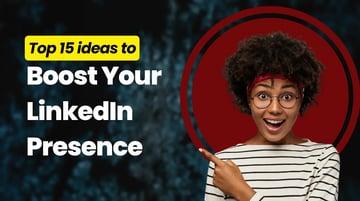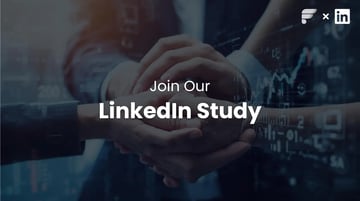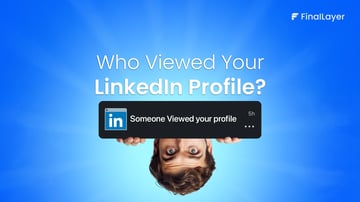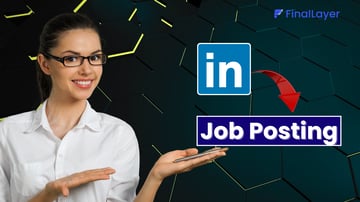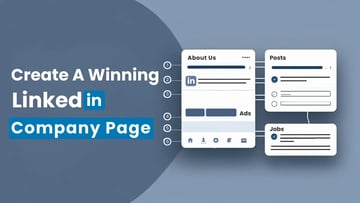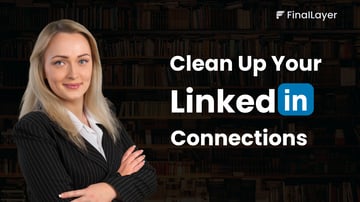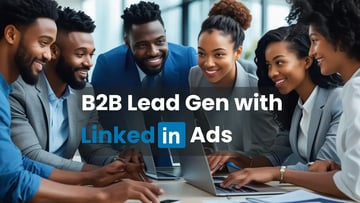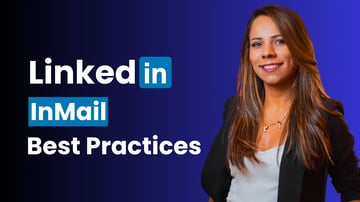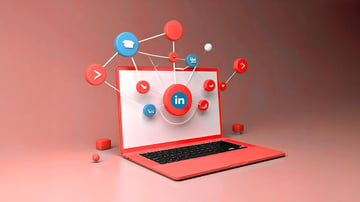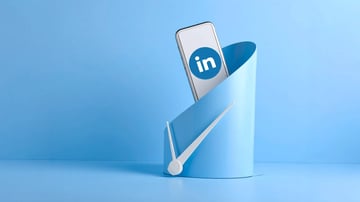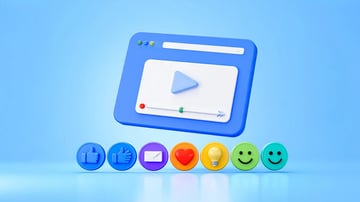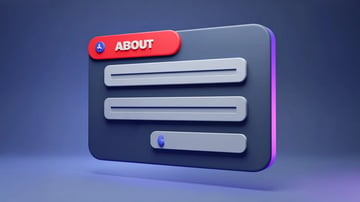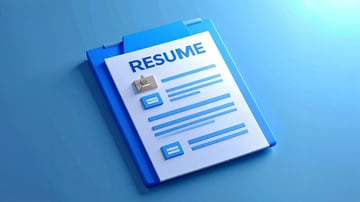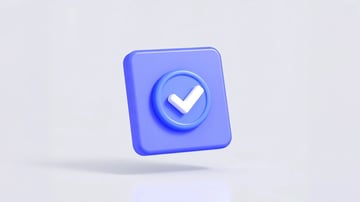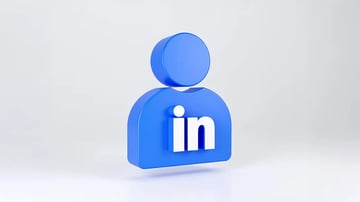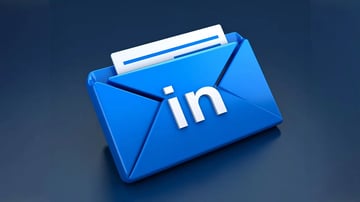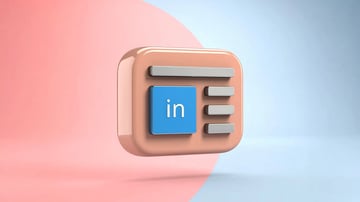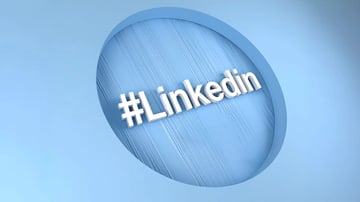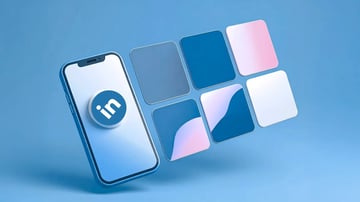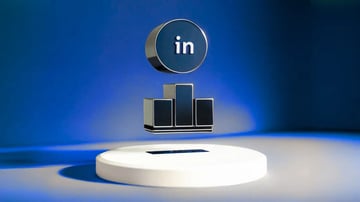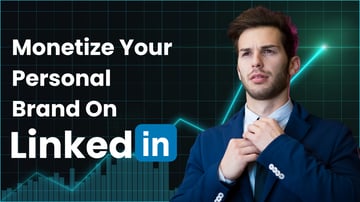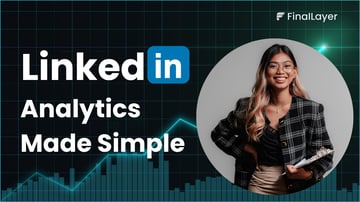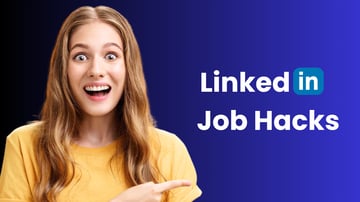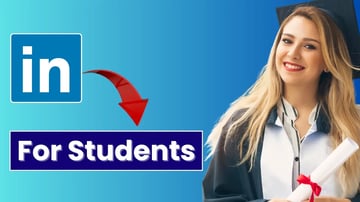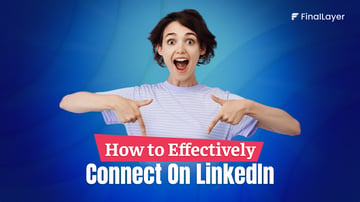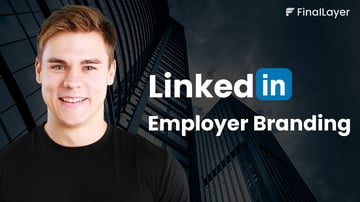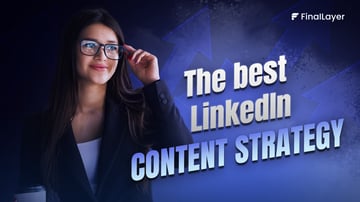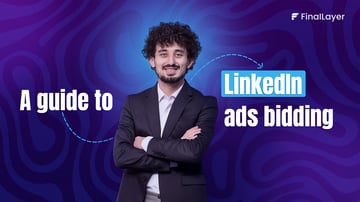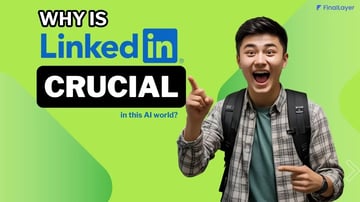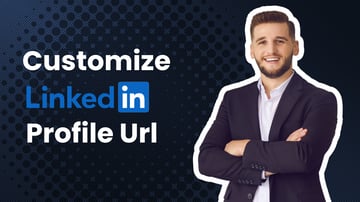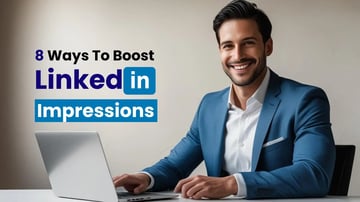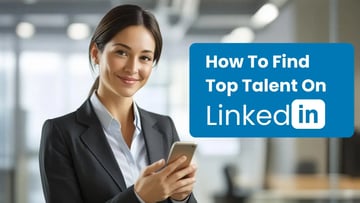LinkedIn has become the primary battleground for B2B sales success. Every day, millions of sales professionals compete for the same prospects' attention, making your messaging strategy more critical than ever.
The problem? Most sales professionals send generic messages that get ignored. They pitch products instead of building relationships, copy-paste templates instead of personalizing outreach, and wonder why their response rates remain frustratingly low.
This guide changes that. You'll discover 10 proven LinkedIn messaging strategies that consistently generate responses, build genuine business relationships, and convert prospects into customers. Each example comes with real-world context and expert insights from successful sales professionals who've mastered the art of LinkedIn outreach.
Understanding LinkedIn messaging
LinkedIn messaging isn't just about sending messages, it's about starting conversations that lead to meaningful business relationships. Before diving into specific examples, you need to understand the different types of LinkedIn messages and when to use each one.
There are three main types of LinkedIn messages: connection requests, direct messages to existing connections, and InMail messages to prospects outside your network. Each serves a specific purpose in your sales outreach strategy.
Connection requests are limited to 300 characters, making every word crucial. Direct messages allow more space but require an existing connection. InMail messages provide the most flexibility but come with additional costs through LinkedIn Sales Navigator.
Expert-Backed LinkedIn Messaging Strategies
Enterprise account executive Justin Solis shares invaluable insights on effective LinkedIn messaging approaches that consistently generate responses. His multi-channel strategy emphasizes LinkedIn as the cornerstone of modern B2B sales outreach.
Jastin's approach centers on six core principles that transform cold outreach into warm conversations. His methodology has helped countless sales professionals increase their response rates and build stronger prospect relationships.
10 Proven LinkedIn Sales Messaging Examples
1. The Pain-Point Connection Request
This message leads with a specific challenge your prospect likely faces rather than talking about your product features.
Example: "Hi [Name], People operations leaders often tell us they struggle with managing employee compensation transparency. PAVE helps employees understand their total comp package, crucial in today's talent war. Let's connect!"
This approach works because it immediately addresses a real problem your prospect encounters daily. You're not selling; you're acknowledging their challenges and positioning yourself as someone who understands their world.
2. The Mutual Connection Message
Leverage shared connections to build instant credibility and trust.
Example: "Hi [Name], I noticed we both know [Mutual Connection] from [Company]. They mentioned you're doing innovative work in [specific area]. I'd love to connect and learn more about your approach to [relevant challenge]."
This message works because it creates an immediate sense of familiarity and shared professional networks. People are more likely to respond to someone within their extended professional circle.
3. The Industry Insight Message
Share valuable industry knowledge that demonstrates your expertise while providing immediate value.
Example: "Hi [Name], I saw your recent post about [specific topic]. The 2024 [Industry] report showed 73% of companies face similar challenges. I'd love to share some insights we've gathered from working with [similar companies]. Worth a connection?"
This approach positions you as a valuable resource rather than just another salesperson. You're offering knowledge before asking for anything in return.
4. The Congratulatory Follow-Up
Celebrate prospects' achievements while subtly introducing your value proposition.
Example: "Congratulations on [recent achievement]! This kind of growth often brings exciting challenges around [relevant area]. We've helped similar companies navigate this transition successfully. Would love to connect and hear about your experience."
This message feels genuine and celebratory while naturally opening the door for business conversation. It shows you're paying attention to their success and want to be part of their continued growth.
5. The Content-Driven Message
Reference specific content your prospect has shared to demonstrate genuine interest in their thoughts.
Example: "Hi [Name], Your article on [specific topic] resonated deeply with our experience helping [similar companies]. Particularly your point about [specific insight]. We've seen similar patterns and would love to share our findings. Let's connect!"
This approach shows you've invested time in understanding their perspective and have valuable insights to contribute to their thinking.
6. The Problem-Solution Bridge
Connect a known industry problem to your solution without being pushy.
Example: "Hi [Name], With [industry trend] affecting [specific outcome], many [job title] professionals are reevaluating their [relevant process]. We've helped companies reduce [specific metric] by [percentage]. Interested in learning how?"
This message acknowledges current market conditions while positioning your solution as timely and relevant. It's educational first, sales-oriented second.
7. The Social Proof Message
Use success stories from similar companies to build credibility.
Example: "Hi [Name], I noticed [Company] recently [specific achievement]. We helped [similar company] achieve [specific result] when they faced similar growth challenges. Would love to share how we supported their success. Let's connect!"
This approach leverages social proof while making the prospect curious about how others have solved similar challenges. It's compelling because it offers proven results.
8. The Question-Based Opener
Start with a thoughtful question that encourages engagement.
Example: "Hi [Name], What's been your biggest challenge with [specific process] as [Company] has scaled? We're seeing interesting patterns across [industry] companies and would love to hear your perspective."
Questions naturally invite responses and show genuine interest in their experience. This approach positions you as a curious professional.
9. The Event-Triggered Message
Reference recent company news or events to create timely relevance.
Example: "Hi [Name], Congratulations on [Company]'s recent [funding/expansion/partnership]. This kind of growth often creates [specific challenge]. We've helped similar companies navigate this successfully. Would love to connect and share insights."
This message shows you're following their company's progress and can offer relevant support during times of change. It's timely and demonstrates genuine interest in their success.
10. The Value-First Follow-Up
After connecting, lead with value before making any requests.
Example: "Thanks for connecting, [Name]! I saw your team is working on [specific project]. Here's a relevant case study showing how [similar company] approached this challenge: [link]. No agenda—just thought you'd find it interesting given your current focus."
This follow-up message delivers immediate value without asking for anything in return. It builds trust and positions you as a helpful resource.
Mastering LinkedIn InMail for Maximum Impact
InMail messages offer expanded reach but require specific techniques to maximize effectiveness. The key is understanding how to craft messages that stand out in busy inboxes while maintaining professional authenticity.
Subject lines play a crucial role in InMail success. They need to create curiosity without being misleading or overly promotional. The best subject lines focus on specific outcomes or intriguing questions rather than generic sales language.
Personalization becomes even more critical with InMail since you're reaching out to people who don't know you. This requires thorough research into their background, recent activities, and potential pain points.
Advanced Follow-Up Strategies That Generate Results
Follow-up messages often determine whether your initial outreach leads to actual business opportunities. The key is maintaining consistent value delivery while gradually building trust and rapport.
Effective follow-up requires understanding the difference between persistence and annoyance. Your follow-up messages should always provide new value or insights rather than simply repeating your initial request.
Timing plays a crucial role in follow-up success. Research shows that following up within 24-48 hours of initial contact significantly increases response rates. However, subsequent follow-ups should be spaced appropriately to avoid overwhelming prospects.
Professional sales experts emphasize the importance of structured follow-up sequences that guide prospects through a logical progression of value delivery. Learn proven techniques from our comprehensive guide on effective follow-up strategies for sales success.
Optimizing Message Timing and Frequency
When you send your LinkedIn messages can significantly impact their effectiveness. Different industries and job roles have varying patterns of LinkedIn usage, affecting optimal timing strategies.
Generally, messages sent on Tuesday through Thursday between 10 AM and 2 PM generate higher response rates. However, this varies based on your target audience's time zone and industry patterns.
Frequency management prevents message fatigue while maintaining consistent presence. A good rule of thumb is spacing initial messages 3-5 days apart, with follow-ups occurring weekly for the first month.
Understanding timing optimization principles helps create systematic approaches that maximize engagement.
Handling Common LinkedIn Messaging Objections
LinkedIn messaging often surfaces common objections that require skilled handling to maintain prospect interest. The most frequent objections revolve around price, timing, and current solution satisfaction.
Price objections require shifting focus from cost to value. Rather than defending your pricing, help prospects understand the return on investment and cost of inaction. This approach reframes the conversation around business impact rather than expense.
Timing objections often mask other concerns. When prospects claim they're "not ready," probe deeper to understand their decision-making process and timeline. This helps position your solution appropriately within their planning horizon.
Current solution satisfaction requires careful questioning to uncover gaps between their current state and optimal outcomes. Many prospects default to status quo comfort even when better alternatives exist.
Building Long-Term Relationships Through Strategic Communication
LinkedIn messaging success extends beyond immediate sales outcomes to long-term relationship building. The most successful sales professionals view LinkedIn as a relationship development platform rather than just a lead generation tool.
Intentional relationship building requires consistent engagement with your network through thoughtful comments, content sharing, and regular check-ins. This approach creates sustainable business relationships that generate referrals and repeat opportunities.
Strategic connecting involves actively reaching out to new professionals in your industry, potential partners, and thought leaders. These connections often lead to unexpected opportunities and valuable industry insights.
Amplifying Your LinkedIn Messaging with Consistent Content Presence
While crafting perfect LinkedIn messages is crucial, your messaging success significantly improves when prospects already recognize your name and expertise. The challenge? Maintaining consistent content creation alongside your sales outreach efforts.
Most sales professionals struggle to balance personalized messaging with regular content posting. You're focused on researching prospects, crafting tailored messages, and following up, leaving little time for the consistent posting that builds your professional brand and makes your outreach messages more effective.
FinalLayer solves this challenge by automating your LinkedIn content creation process while you focus on high-value messaging activities. The platform transforms busy sales professionals into recognized thought leaders through:
- Automated post creation that maintains consistency without daily time investment
- Topic suggestions aligned with your industry expertise and target audience interests
- Personalized tone matching that ensures every post sounds authentically like you
- Integrated video content that increases engagement and makes your posts more memorable
When prospects see your name in their inbox, they'll already recognize you from your consistent, valuable content. This recognition dramatically increases message response rates and positions you as a trusted industry expert rather than just another salesperson.
In less than five minutes daily, FinalLayer helps you maintain a professional presence that amplifies your messaging effectiveness. Your outreach becomes warm introductions to someone prospects already know and respect.
Ready to transform your LinkedIn presence? Try FinalLayer today and watch your messaging response rates soar.
Common LinkedIn Messaging Mistakes to Avoid
Even experienced sales professionals make critical mistakes that sabotage their LinkedIn messaging effectiveness. Understanding these pitfalls helps you avoid common traps that reduce response rates.
Generic messaging represents the most common mistake. When prospects receive identical messages, they immediately recognize the lack of personalization and rarely respond. Every message should reflect specific research about the recipient.
Immediate sales pitches kill conversations before they start. Leading with product features or pricing information positions you as a vendor rather than a trusted advisor. Focus on understanding their challenges first.
Inconsistent follow-up patterns confuse prospects and reduce your credibility. Establish clear follow-up schedules and stick to them consistently. This demonstrates professionalism and reliability.
Ignoring LinkedIn's professional culture can result in account restrictions or poor brand perception. Maintain appropriate professional tone and respect platform guidelines in all interactions.
Measuring and Optimizing Your LinkedIn Messaging Performance
Successful LinkedIn messaging requires continuous measurement and optimization based on performance data. Key metrics include connection request acceptance rates, message response rates, and conversion to qualified meetings.
A/B testing different message approaches helps identify what resonates with your specific audience. Test elements like subject lines, message length, personalization approaches, and call-to-action phrasing.
Response rate benchmarks vary by industry, but generally, connection request acceptance rates above 30% and message response rates above 15% indicate strong performance. Monitor these metrics regularly to identify improvement opportunities.
Advanced optimization techniques involve analyzing patterns in successful conversations to identify common elements. This helps refine your approach based on proven success factors.
Conclusion
LinkedIn sales messaging success requires a strategic approach that prioritizes relationship building over immediate sales outcomes. The 10 messaging examples provided offer proven frameworks for engaging prospects authentically while demonstrating genuine value.
Remember that effective LinkedIn messaging is part of a comprehensive multi-channel outreach strategy. Combine these techniques with email, phone calls, and other touchpoints to create powerful sales sequences that guide prospects through your sales funnel.
The key to long-term success lies in consistent value delivery, authentic personalization, and systematic optimization based on performance data. Every interaction should build trust and demonstrate your expertise while addressing real prospect challenges.
Implementation of these strategies requires patience and persistence. Focus on building genuine relationships rather than chasing immediate sales, and your LinkedIn messaging efforts will generate sustainable business growth over time.
